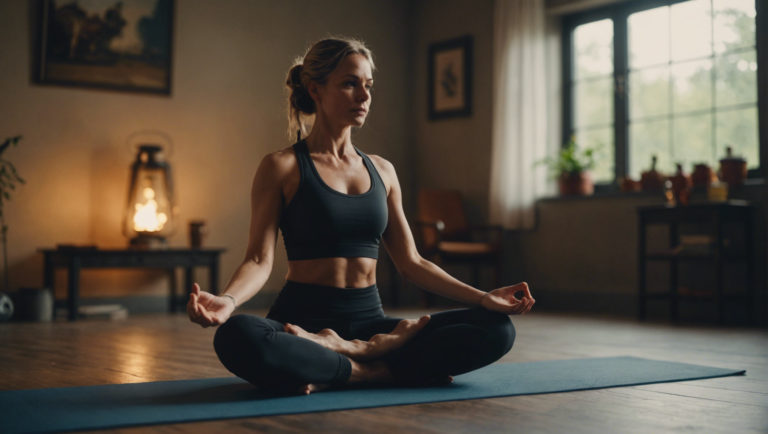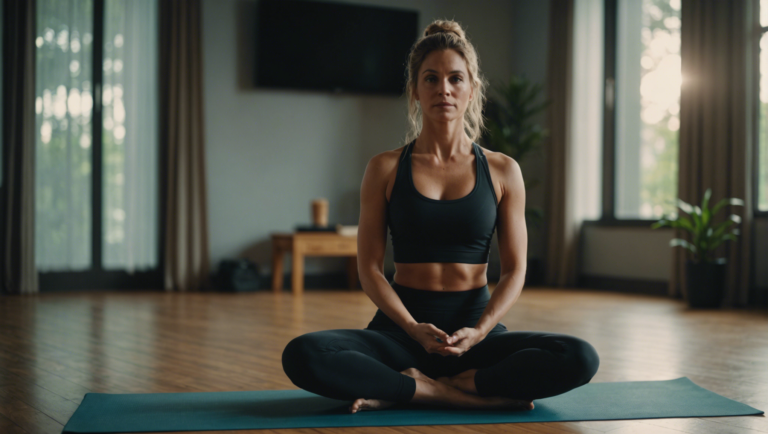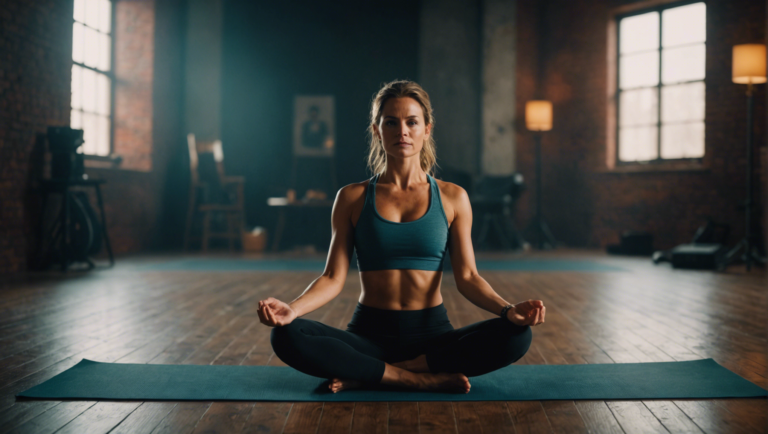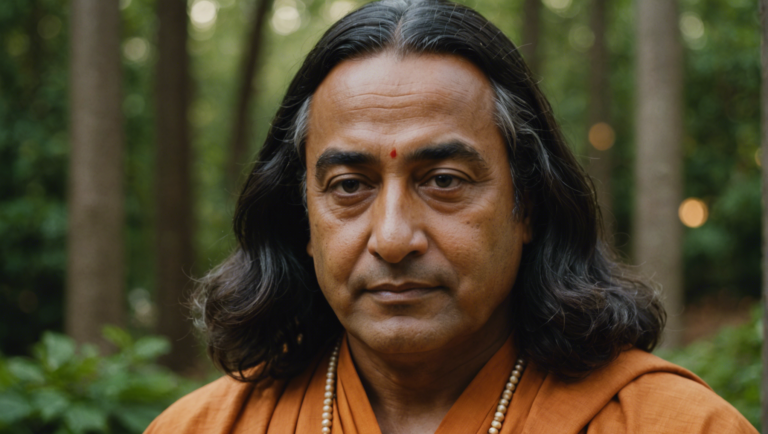Discover How Yoga Can Effectively Tone Your Body
The Science Behind Yoga and Body Toning
The Interplay of Yoga and Muscular Strength: A Deep Dive
Yoga, often perceived merely as a series of stretches and poses, holds a profound capability to sculpt and tone the body. Through the lens of science, we unravel how this ancient practice harmoniously aligns with the principles of body toning, delivering results that transcend mere physical appearance.
Understanding the Mechanism of Yoga in Enhancing Muscle Tone
Yoga encompasses a spectrum of poses, each targeting different muscle groups. Unlike traditional strength training, which isolates specific muscles, yoga promotes holistic body engagement. This multifaceted approach ensures a balanced development of muscular strength and endurance. The science behind yoga’s effectiveness lies in its ability to increase muscle fiber activation through sustained holds and controlled movements. This not only fosters muscle growth but also enhances muscle definition.
The Role of Breathing in Maximizing Yoga’s Toning Potential
Breathing, the cornerstone of yoga, plays a pivotal role in amplifying its body-toning benefits. The deliberate focus on deep, rhythmic breaths during practice intensifies muscle engagement. This increased oxygen supply boosts metabolic activity, aiding in the breakdown of fat cells surrounding the muscle tissues. Consequently, this reveals the underlying muscle definition, contributing to a more toned appearance.
Flexibility and Strength: The Dual Pillars of Yoga
Yoga’s dual emphasis on flexibility and strength sets it apart as a comprehensive tool for body toning. Flexibility gained through yoga enhances the range of motion, allowing for more effective muscle engagement during physical activities. Concurrently, the strength-building aspect of yoga, manifested through poses like planks, warriors, and inversions, challenges the muscles, promoting hypertrophy. This unique blend not only leads to a toned physique but also fortifies the body against injuries.
Scientific Evidence Supporting Yoga’s Efficiency in Body Toning
Numerous studies corroborate the anecdotal evidence of yoga’s efficacy in body toning. Research demonstrates that regular yoga practice significantly improves muscle strength, endurance, and flexibility. Moreover, yoga has been shown to positively impact body composition by reducing body fat percentage and increasing lean muscle mass. These findings solidify yoga’s standing as an effective modality for achieving a toned and healthy body.
How to Leverage Yoga for Optimal Body Toning
To maximize yoga’s toning benefits, incorporating a variety of styles and poses is recommended. Practices such as Vinyasa or Ashtanga, known for their dynamic and physically demanding sequences, are particularly effective for building muscle strength and endurance. Additionally, integrating poses that target different muscle groups ensures a comprehensive workout, fostering balanced muscle development.
Expert Testimonies and Real-Life Success Stories
The transformational power of yoga extends beyond the confines of scientific studies. Fitness experts and practitioners alike endorse yoga as a potent tool for body toning. Personal success stories abound, with individuals citing improved muscle definition, increased strength, and reduced body fat as tangible benefits of their yoga practice. These testimonies serve as a testament to yoga’s effectiveness in sculpting a toned physique.
Embracing Yoga for Holistic Health and Well-Being
While the pursuit of a toned body might draw many to yoga, the practice offers holistic benefits that permeate beyond physical appearance. Yoga fosters mental clarity, emotional balance, and spiritual growth, contributing to overall well-being. In essence, yoga not only shapes the body but also enriches the soul, proving that its benefits are as profound as they are manifold.
In the realm of fitness and body sculpting, yoga emerges not just as a trend but as a timeless practice rooted in science and tradition. Its comprehensive approach to body toning—melding strength, flexibility, and mindfulness—paves the way for lasting change, both inside and out. As we continue to explore and embrace the multifaceted benefits of yoga, its role in promoting a healthy, toned, and vibrant physique remains unequivocally clear.
Top Yoga Poses for Strengthening and Sculpting the Body
Yoga is not only a pathway to achieving a state of mental and physical harmony but also a highly effective method for sculpting a toned and strong body. The practice, which combines aspects of strength, flexibility, and balance, offers an array of poses (asanas) that can significantly enhance muscle tone and improve overall body strength. Below are some key yoga poses that are particularly beneficial for strengthening and sculpting the body, providing a holistic approach to fitness and wellbeing.
Plank Pose (Phalakasana) – Building Core Strength and Stability
The Plank Pose is foundational in yoga, serving as a powerful tool for developing core strength and stability. This asana engages a wide range of muscles, including the abdominals, chest, shoulders, and the muscles along the spine. Holding the plank position not only tones the core but also strengthens the arms and legs, making it a comprehensive body workout. The key to maximizing the benefits of Plank Pose lies in maintaining proper alignment and focusing on engaging the core muscles throughout the hold.
Warrior II (Virabhadrasana II) – Enhancing Lower Body Strength
Warrior II is a dynamic standing pose that targets the legs, glutes, and hips while also working the arms and abdominal muscles. This pose requires balance and stamina, as it involves holding a lunge position that effectively tones the quadriceps and hamstrings. Additionally, Warrior II promotes improved circulation and respiration, contributing to a healthy metabolism and aiding in the body sculpting process. The pose encourages the practitioner to engage with their body fully, enhancing mindfulness and concentration.
Chair Pose (Utkatasana) – Tightening the Glutes and Thighs
Chair Pose is another potent asana for toning the lower body, particularly the thighs and glutes. By simulating the action of sitting in an invisible chair, this pose deeply works the leg muscles, builds endurance, and improves balance. The intrinsic challenge of maintaining the pose stimulates the cardiovascular system, burning calories and promoting fat loss. Moreover, Chair Pose can be adapted with arm variations to also engage the upper body, making it a versatile exercise for body sculpting.
Boat Pose (Navasana) – Strengthening the Core and Hip Flexors
Boat Pose focuses intensely on the core, especially the deep abdominal muscles, and the hip flexors. It is an excellent pose for developing abdominal strength and definition. By balancing on the sitting bones and maintaining the pose, Navasana challenges the body’s stability and endurance. Additionally, it stimulates the digestive system, which is beneficial for maintaining a healthy metabolism. Regular practice of Boat Pose can lead to profound improvements in core strength and contribute to a well-toned physique.
Bridge Pose (Setu Bandhasana) – Sculpting the Back and Glutes
Bridge Pose is a rejuvenating backbend that strengthens the back muscles, glutes, and hamstrings, while also stretching the chest, neck, and spine. The engagement required to lift the hips off the ground in Bridge Pose helps in toning the lower body and improving spinal flexibility. Its benefits extend to improving posture and relieving stress, making it a multifaceted pose for body sculpting and mental well-being.
By integrating these yoga poses into a regular practice, individuals can achieve a more toned and sculpted body, along with the myriad benefits yoga offers for mental and physical health. Each pose presents opportunities to challenge the body in new ways, promoting strength, flexibility, and balance. It is always recommended to practice with awareness and respect for one’s body, gradually increasing intensity and duration for optimal benefits. With dedication and regular practice, these yoga poses can be a key component of a comprehensive fitness regimen that leads to a strong, toned, and sculpted body.
The Role of Breathwork and Mindfulness in Enhancing Physical Results
Breathwork and Mindfulness: Unlocking Enhanced Physical Results
The pursuit of enhanced physical fitness is often associated with rigorous exercise routines, dietary disciplines, and the latest in sports science. Yet, an often overlooked dimension that promises significant benefits to physical results lies in the twin practices of breathwork and mindfulness. These ancient techniques, deeply embedded in various cultural traditions around the world, are increasingly being validated by modern science for their positive impact on physical health and athletic performance.
Understanding the Power of Breathwork
Breathwork refers to the conscious manipulation of breathing patterns to influence mental, emotional, and physiological states. It is more than just deep breathing; it’s an art that, when mastered, can significantly enhance oxygenation, reduce stress levels, and improve the body’s response to physical training. Various studies have shown that specific breathing techniques can increase stamina, reduce recovery time, and even enhance the body’s innate healing processes. This is because controlled breathing can directly influence the autonomic nervous system, shifting it from a ‘fight or flight’ stress response to a ‘rest and digest’ state, thereby optimizing the body for recovery and growth.
The Role of Mindfulness in Physical Performance
Mindfulness, the practice of maintaining a nonjudgmental state of heightened or complete awareness of one’s thoughts, emotions, or experiences on a moment-to-moment basis, complements breathwork in the realm of physical training. It trains the brain to remain focused on the present moment, enhancing concentration and preventing the mind from wandering during workouts or competitions. This mental discipline not only improves performance by enhancing neural plasticity and mental fortitude but also aids in the prevention of injuries by promoting a greater awareness of the body and its limits.
Synergizing Mind and Body for Optimal Performance
The seamless integration of breathwork and mindfulness into physical training regimens can create a powerful synergy. Athletes and fitness enthusiasts often report improvements not just in their physical capabilities, but also in their mental resilience and overall well-being. By optimizing the mind-body connection, individuals can unlock levels of performance and physique enhancement traditionally thought to be attainable only through more tangible training and nutritional strategies.
Practical Applications for Everyday Fitness
For the everyday fitness enthusiast, integrating these practices into a workout routine doesn’t require drastic changes. It can be as simple as starting with a few minutes of mindful breathing before each workout to center oneself and enhance focus. During exercise, maintaining an awareness of the breath helps in monitoring exertion levels and maintaining a steady pace, thereby maximizing workout efficiency. Additionally, ending each session with a mindfulness exercise can aid in recovery by lowering cortisol levels and reducing stress.
The Scientific Backing and Expert Endorsement
A growing body of scientific research supports the efficacy of breathwork and mindfulness in enhancing physical health and athletic performance. Experts in sports psychology and physiology increasingly advocate for their inclusion in training programs across all levels of sport. This expert endorsement not only validates the practices but encourages a holistic approach to physical training that balances the physical with the mental.
Engaging with Breathwork and Mindfulness for Long-term Benefits
Adopting breathwork and mindfulness for enhanced physical results is a journey rather than a quick fix. It requires persistence, practice, and patience, but the long-term benefits that accrue go beyond mere physical health. They imbue practitioners with a deeper sense of self-awareness, mental clarity, and emotional resilience, qualities that are invaluable both in and out of the gym.
In sum, the integration of breathwork and mindfulness into one’s fitness regime can profoundly influence physical results, not through direct physiological mechanisms alone but by fostering a stronger, more resilient mindset. This holistic approach to physical fitness, rooted in ancient wisdom and validated by modern science, offers a comprehensive pathway to achieving not only improved physical health but also enhanced mental and emotional well-being.
Integrating Yoga into Your Daily Routine for Optimal Fitness
Yoga has long been celebrated for its ability to foster physical, mental, and emotional wellbeing. One of its remarkable benefits is its capacity to enhance overall fitness through a blend of strength, flexibility, and balance exercises. When seamlessly woven into your daily regimen, yoga can be a transformative tool, guiding you toward achieving and maintaining optimal fitness levels. Here, we delve into how to integrate yoga into your daily routine, ensuring it becomes an accessible and effective part of your journey towards health and vitality.
The Early Morning Stretch: Awakening Your Body
Starting your day with yoga can invigorate your body, awaken your mind, and set a positive tone for the day ahead. Early mornings are ideal for practices focused on gentle stretches and mindful breathing, preparing your body and mind for the day’s challenges. By dedicating as little as 15 to 30 minutes each morning to yoga, you can significantly improve your flexibility, boost your energy levels, and enhance your mental focus.
Balancing Work and Poses: The Art of Desk Yoga
For those with sedentary jobs or busy schedules that confine them to a desk for most of the day, integrating yoga into your work routine can offer much-needed relief and balance. Desk yoga includes a series of subtle stretches and poses that can be performed right at your workplace, without the need for any special equipment. These exercises can help counteract the stiffness and discomfort that often accompany prolonged sitting, improving your posture and reducing the risk of chronic pain.
The Evening Wind Down: Releasing Stress with Yoga
Evenings are an excellent time to engage in a more calming yoga practice, helping to release the stress and tension accumulated throughout the day. Practices such as Yin Yoga or Restorative Yoga focus on deep relaxation, promoting mental calmness and physical relaxation. these practices into your evening routine can improve your sleep quality, making it easier for you to unwind and fall asleep.
Making Yoga a Family Affair: Engaging Loved Ones in Your Practice
Yoga doesn’t have to be a solitary practice. In fact, involving your family or housemates can transform it into a fun, engaging, and bonding activity. Designating specific times for group yoga sessions can enhance everyone’s motivation and commitment to the practice. It’s a wonderful way to share the benefits of yoga, encouraging a healthier lifestyle among your loved ones while strengthening your personal relationships.
Tailoring Yoga to Your Fitness Goals: A Personalized Approach
Yoga is incredibly versatile, offering various styles and practices that cater to different fitness goals and preferences. Whether you’re looking to improve strength, enhance flexibility, lose weight, or simply maintain a healthy lifestyle, there’s a yoga practice for you. By understanding and aligning yoga practices with your specific fitness goals, you can create a customized yoga routine that optimally supports your journey towards better health and fitness.
Embracing Consistency and Patience: The Key to Profound Benefits
The transformative power of integrating yoga into your daily routine lies in consistency and patience. Yoga is a practice that unfolds its benefits over time, offering gradual but profound improvements in physical health, mental clarity, and emotional balance. By embracing yoga as a daily habit and approaching it with patience, you open yourself to a journey of continuous growth and well-being.
By seamlessly integrating yoga into your daily routine, you can unlock its full potential as a tool for achieving optimal fitness. With its unique combination of physical exercises, mental focus, and emotional balance, yoga offers a holistic approach to health and well-being. Remember, the journey of yoga is one of progress, not perfection. Embrace it as part of your daily life, and watch as it transforms your fitness journey, one pose at a time.
Overcoming Common Misconceptions About Yoga and Bodybuilding
Shattering Myths Surrounding Yoga and Bodybuilding
The realms of yoga and bodybuilding may seem worlds apart at a glance. One conjures images of serene, flexible practitioners keen on balance and spiritual wellbeing, while the other often evokes thoughts of intense, muscle-bound athletes lifting heavy weights. However, the dichotomy between these two disciplines is not as vast as it might appear. Exploring the common misconceptions surrounding both can illuminate a path toward holistic fitness and health that leverages aspects of each practice.
The Misconception of Mutual Exclusivity
One prevailing myth is the belief that dedicating oneself to yoga means forsaking strength training, and vice versa. This binary thinking ignores the potential synergy between yoga and bodybuilding. Yoga’s focus on flexibility, balance, and core strength can significantly benefit bodybuilders by enhancing muscle recovery, increasing range of motion, and reducing the risk of injury. Conversely, the strength and endurance gained through bodybuilding can improve yoga performance, enabling practitioners to hold poses longer and with greater stability.
Debunking the "Yoga is Not for Strength" Myth
An oft-heard narrative is that yoga cannot contribute to muscle strength or definition. This misconception overlooks the fact that numerous yoga poses and sequences are highly effective in building strength—especially in the core, arms, legs, and back. Practices like Ashtanga, Vinyasa, and Power Yoga, which incorporate flowing sequences and bodyweight exercises, can be particularly effective in toning and strengthening the body.
Clarifying the "Bodybuilding Lacks Flexibility" Stereotype
Conversely, there’s a stereotype that bodybuilding inevitably leads to reduced flexibility and muscle stiffness. While it’s true that intensive weight training can sometimes limit range of motion if not balanced with proper stretching, incorporating flexibility work into a bodybuilding routine can prevent this. Bodybuilders have greatly benefited from integrating yoga principles into their routines, as yoga stretches help to elongate the muscles, improve flexibility, and enhance overall physique symmetry.
Synergy for Optimal Health and Performance
Instead of viewing yoga and bodybuilding as opposing forces, adopting practices from both can lead to superior health outcomes. Yoga’s mindfulness component encourages a deeper connection with the body, teaching practitioners to heed their limits and recognize the signs of overtraining or potential injury. This awareness is invaluable for bodybuilders, who often push their limits in pursuit of muscle gains.
Implementing a Balanced Approach
For those looking to blend the benefits of yoga with bodybuilding, starting with a couple of yoga sessions per week can introduce flexibility and mindfulness routines into their regimen. Similarly, bodybuilders can consider lighter strength training exercises on yoga days to maintain a balance. Listening to the body is key; allowing adequate recovery time is essential in preventing overuse injuries and ensuring that both yoga and bodybuilding practices complement each other.
Navigating Through Misinformation
In an age where fitness advice is plentiful but not always accurate, it’s crucial to critically evaluate the information encountered. Seeking advice from experienced practitioners who have successfully integrated yoga and bodybuilding into their fitness regime can provide valuable insights and practical tips for others wishing to do the same.
By challenging and overcoming these common misconceptions, individuals can unlock a fitness approach that is not only balanced and sustainable but also tailored to their unique health and wellness goals. Both yoga and bodybuilding, when harmonized, offer a comprehensive fitness regimen that addresses strength, flexibility, mindfulness, and overall wellbeing.
Conclusion
Understanding the multifaceted benefits of yoga reveals a comprehensive approach to fitness that transcends conventional exercise routines. The science behind yoga and body toning underscores this practice’s capacity to not only sculpt a more toned physique but also enhance overall health and wellness. Through the deliberate and mindful execution of poses, yoga taps into deep muscle groups, often neglected by other forms of physical activity, promoting strength, flexibility, and balance. This unique combination of stretching and strengthening exercises encourages the body to become leaner and more defined, illustrating yoga’s effectiveness in achieving a toned and sculpted body.
Further exploration of specific yoga poses for strengthening and sculpting the body unveils a targeted approach to fitness. Poses such as Chaturanga Dandasana, Virabhadrasana, and Paripurna Navasana, among others, are essential components of a yoga regimen designed to build muscle and enhance endurance. These poses, when practiced consistently and correctly, engage the core, arms, legs, and back, contributing to a well-rounded toning effect. The versatility of yoga ensures that individuals at any fitness level can start their journey towards a stronger and more sculpted physique, making it an inclusive and adaptable exercise modality.
The role of breathwork and mindfulness in enhancing physical results cannot be overstated. Yoga’s incorporation of focused breathing and mental concentration deepens the connection between mind and body, amplifying the benefits of the physical exercises. This mindful approach to exercise accentuates the quality of each movement, increases awareness of muscular engagement, and prevents injury. Moreover, the stress-reducing effects of breathwork and mindfulness contribute to the reduction of cortisol levels, further supporting physical well-being and aiding in the reduction of body fat.
Integrating yoga into your daily routine for optimal fitness emerges as a practical strategy for sustained health. Unlike the sporadic bursts of motivation that often accompany traditional workout regimens, yoga fosters a consistent and enjoyable practice. Its emphasis on progress and self-awareness encourages a long-term commitment to health, rather than short-lived fitness goals. Additionally, yoga’s adaptability means it can seamlessly blend into various lifestyles, regardless of time constraints or physical limitations, making it a viable and effective approach to maintaining daily fitness.
Addressing and overcoming common misconceptions about yoga and bodybuilding is crucial for recognizing yoga’s legitimate place in the fitness world. The misconception that yoga cannot build muscle or contribute significantly to body toning is debunked through an understanding of its principles and outcomes. Yoga’s comprehensive approach, focusing on whole-body fitness, contrasts with the isolated muscle focus of traditional bodybuilding, offering a balanced and sustainable method for achieving and maintaining physical health.
As we delve into the intricacies of yoga as a potent tool for body toning and overall fitness, it’s evident that its benefits extend well beyond simple physical appearance. The holistic approach of yoga, encompassing physical, mental, and emotional wellness, offers a sustainable and rewarding path to health. By integrating the science of yoga with mindful practices and regular engagement, individuals can unlock remarkable improvements in their physical shape, mental clarity, and emotional resilience. This journey towards a toned, healthy body intertwined with mental peace and mindfulness heralds a new era in understanding fitness, where the goal is not only to look good but to feel profoundly connected and alive. Yoga, therefore, stands as a beacon of holistic health and fitness, promising a sculpted body, a serene mind, and a vibrant spirit for those who embrace its practice.



